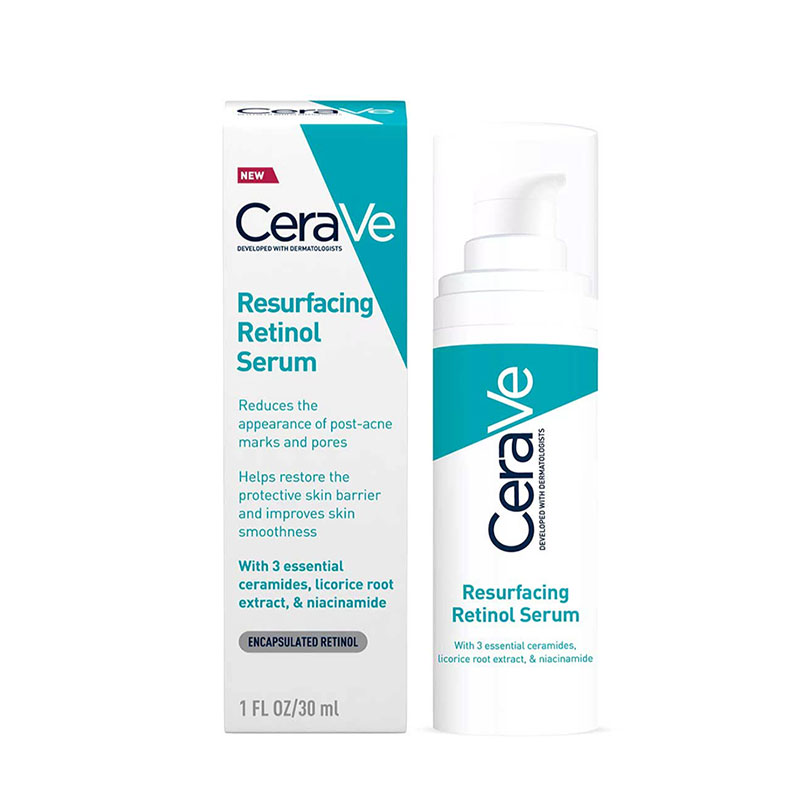If you’re a skin-care junkie then you’ve no doubt come across retinol, the most powerful anti-aging skincare ingredient. Retinoids, which belong to the same family as retinol, were originally used to treat acne and clear blackheads and they are still used for that purpose today. however, it was later discovered that Retinoids also had remarkable anti-aging effects. Retinol is a derivative of Vitamin A, an ingredient that promotes skin renewal and enhances collagen production (which starts to decline in your 30s). If your current skincare concerns include fine lines, pore size, uneven skin tone, wrinkles, and texture, then you may want to consider adding a retinol cream or serum to your routine because according to dermatologists, this is the skincare ingredient that does it all!
How retinol works & why it’s good for your skin
The active agent in retinol is retinoic acid, which is what’s responsible for increasing cell turnover. The effectiveness of retinols therefore lies in their remarkable ability to stimulate cellular turnover and collagen production. When applied to the skin, retinol accelerates the shedding of old, dull skin cells, revealing fresher, plump skin beneath. Additionally, it prompts the production of collagen, which is essential for maintaining the skin’s elasticity and firmness. Here are some of the benefits of using retinol.
- Anti-aging: Retinol is renowned for its anti-aging properties. It stimulates collagen production, which helps to minimize the appearance of fine lines and wrinkles, promoting smoother, more youthful skin.
- Acne Treatment: Retinol’s ability to regulate skin cell turnover and reduce inflammation makes it effective for treating and preventing acne breakouts. The exfoliating and collagen-promoting effects of retinol also help reduce acne scars over time.
- Even skin tone: It fades hyperpigmentation, such as age spots and sun damage, leading to a more even and radiant skin tone.

While it’s never too early to start focusing on preventive measures, retinol is potent and can cause irritation, especially for those with sensitive skin. Typically, it’s advisable to introduce retinol in your late 20s or early 30s, as this is when collagen production naturally starts to decline. However, if you have specific skin concerns e.g. acne acne-prone skin, you might consider incorporating retinol into your skincare routine a little earlier. Most dermatologists advise starting with a lower concentration between 0.3% to 0.5% before gradually increasing it as your skin builds tolerance.
Can you use retinol together with AHA’s or BHA’s?

Retinol can be a valuable addition to a comprehensive skincare regimen, and combining it with chemical exfoliants can yield remarkable results. However, it’s crucial to exercise caution when using it with other active ingredients such as alpha hydroxy acids (AHAs), beta hydroxy acids (BHAs), and even vitamin C.
The primary risk associated with the simultaneous use of a chemical exfoliator and retinol is the potential for skin irritation, which may manifest as inflammation, redness, or flaking.

For this reason, it’s best to allow your skin time to adjust to the new routine slowly before adding on other active ingredients. It’s extremely important to identify your skin type before attempting to use chemical exfoliators together with retinol. For instance, people with sensitive skin types and those with dry skin types may not be able to tolerate the two products together and should therefore stick to using one or the other. It’s advisable to consult a dermatologist or skincare professional before incorporating any active ingredients into your routine. A dermatologist can create a safe and effective routine tailored to your specific need.
Retinol side effects
While retinol can work wonders for your skin, it can also cause some side effects, especially when used incorrectly, the side effects are usually temporary and they include:
- Dry, irritated skin.
- Itching or burning.
- Redness, peeling, flaky or scaly skin.
- Increased sensitivity
These side effects should gradually go away as your skin gets used to the product. NB: Purging is normal when using retinol, the purge phase usually lasts for two to six weeks.
How to incorporate retinol into your routine
1)Prep Your Skin: Cleanse and tone your skin before applying retinol. A clean canvas helps maximize its absorption, do not scrub your skin while using retinol products.
2)Pea-Sized Amount: Retinol is potent so a little product goes a long way. Use a pea-sized amount for your entire face, avoiding the delicate area under your eyes. Start by applying retinol 2-3 times a week and if you are new to it and unsure how your skin will react, conduct a patch test. Retinol should be applied at night, as it can make your skin more sensitive to the sun.
3)Moisturize: Allow the retinol to absorb into the skin for 20 to 30 minutes before following up with a hydrating, non-comedogenic moisturizer to lock in moisture and soothe any potential irritation.
4)Sun Protection: Apply sunscreen diligently during the day. Retinol can increase sun sensitivity, therefore sun protection is crucial.

NB: The topical application of retinol may lead to high levels of vitamin A in the body, which is why retinol products are not recommended during pregnancy or while breastfeeding, as excessive vitamin A intake can pose a significant risk to the developing fetus.
Retinol is a potent ally in your quest for youthful, radiant skin. However, it’s crucial to use it wisely and be patient as your skin adjusts. The key to successfully incorporating retinol into your skincare routine is gradual introduction, diligent sun protection, and listening to your skin’s needs. It is advisable to seek personalized guidance from a dermatologist or skincare professional.

